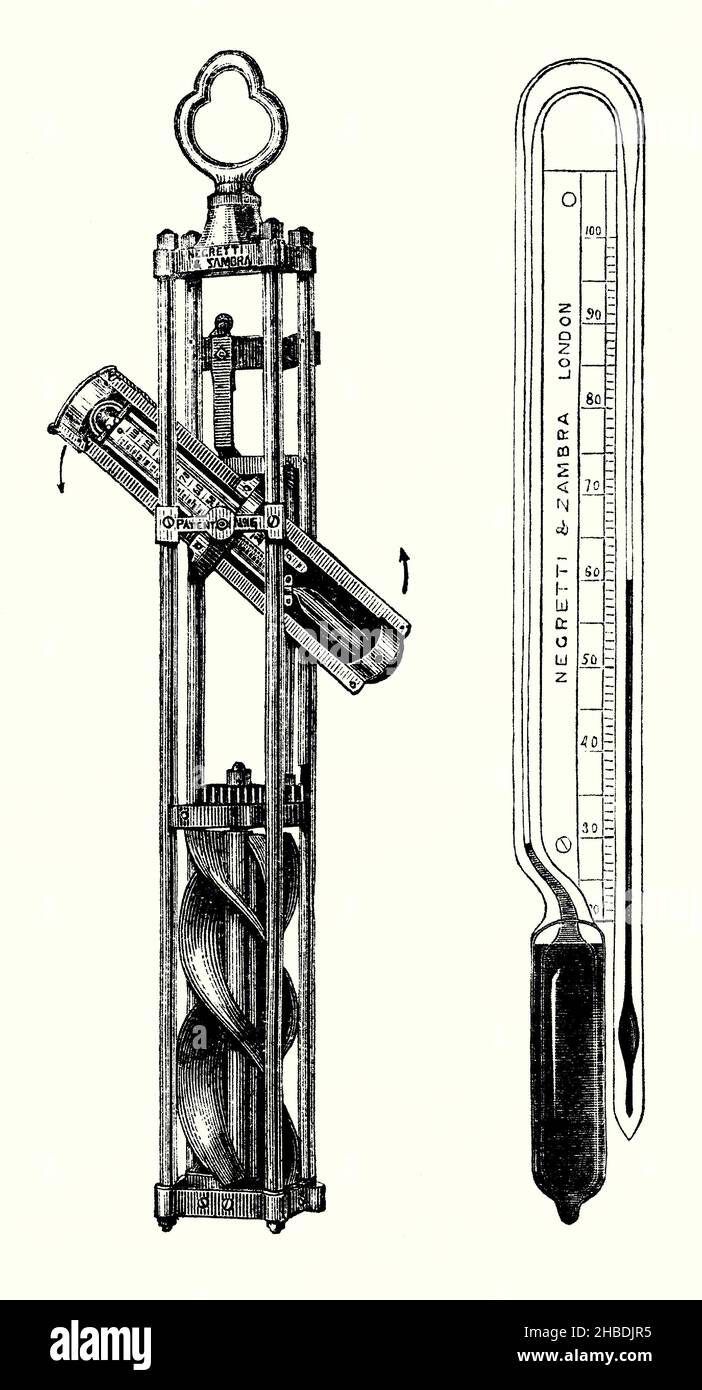An old engraving of a thermometer designed for taking underwater temperatures in the 1800s. It is from a Victorian book of the 1890s on discoveries and inventions during the 1800s. These were first introduced by Negretti and Zambra (London) in 1874. They can be mounted in reversing frames and as here. By turning through 180 degrees, the mercury column breaks at the point of constriction and runs down, filling the bulb and part of the graduated capillary, and thus indicating the temperature when it is reversed.

Image details
Contributor:
M&N / Alamy Stock PhotoImage ID:
2HBDJR5File size:
34.5 MB (1.4 MB Compressed download)Releases:
Model - no | Property - noDo I need a release?Dimensions:
2554 x 4724 px | 21.6 x 40 cm | 8.5 x 15.7 inches | 300dpiDate taken:
2 December 2021Location:
London, England, UKMore information:
This image could have imperfections as it’s either historical or reportage.
An old engraving of a thermometer designed for taking underwater temperatures in the 1800s. It is from a Victorian book of the 1890s on discoveries and inventions during the 1800s. These were first introduced by Negretti and Zambra (London) in 1874. They are often mounted upon the water-sampling bottles, but they can be mounted in reversing frames and used independently. The thermometer is enclosed in a heavy glass tube that is partially evacuated except for the portion surrounding the reservoir of the reversing thermometer, and this part is filled with mercury to serve as a thermal conductor between the surroundings and the reservoir. The amount of mercury above the constriction depends upon the temperature, and, when the thermometer is reversed, by turning through 180 degrees, the mercury column breaks at the point of constriction and runs down, filling the bulb and part of the graduated capillary, and thus indicating the temperature when it is reversed.